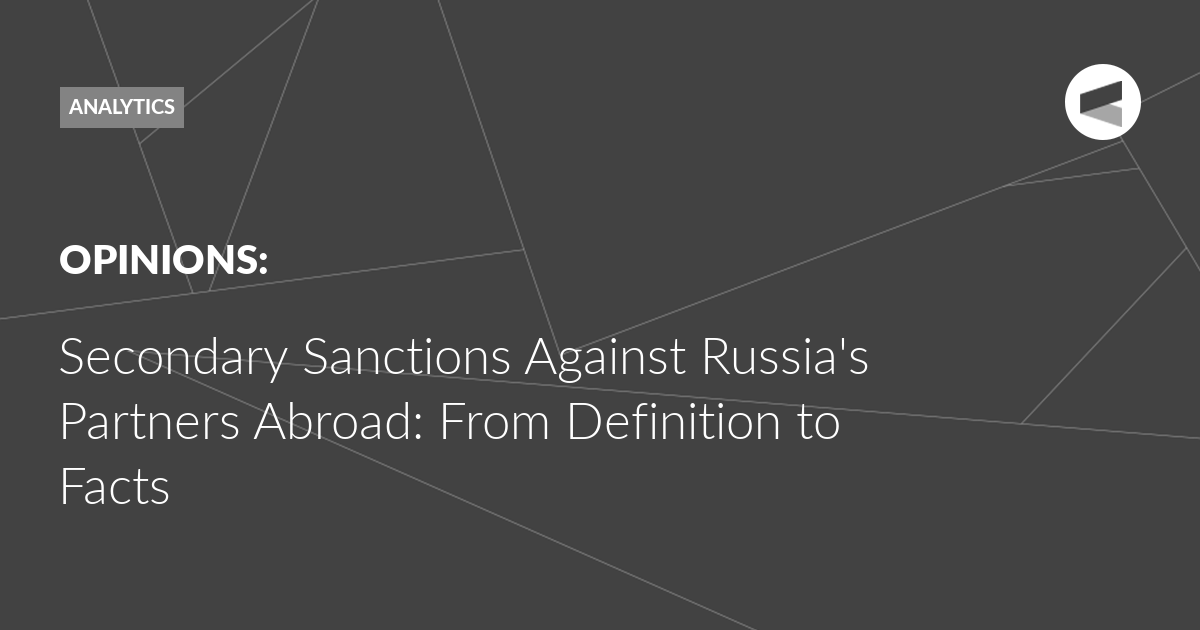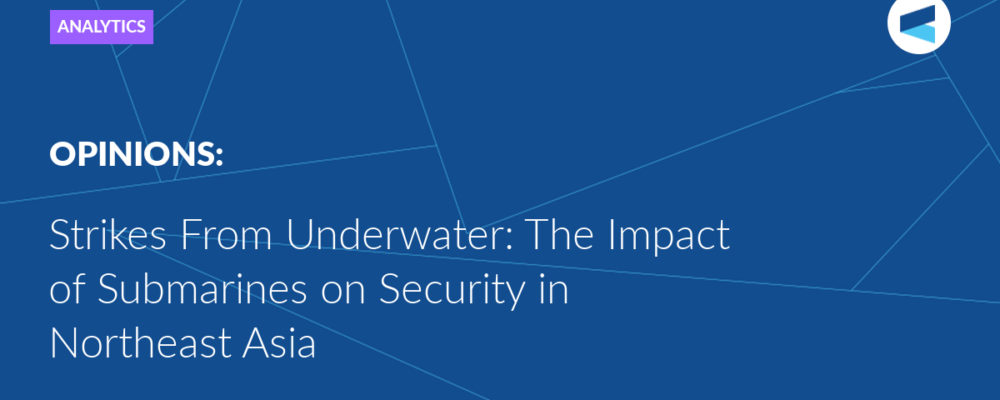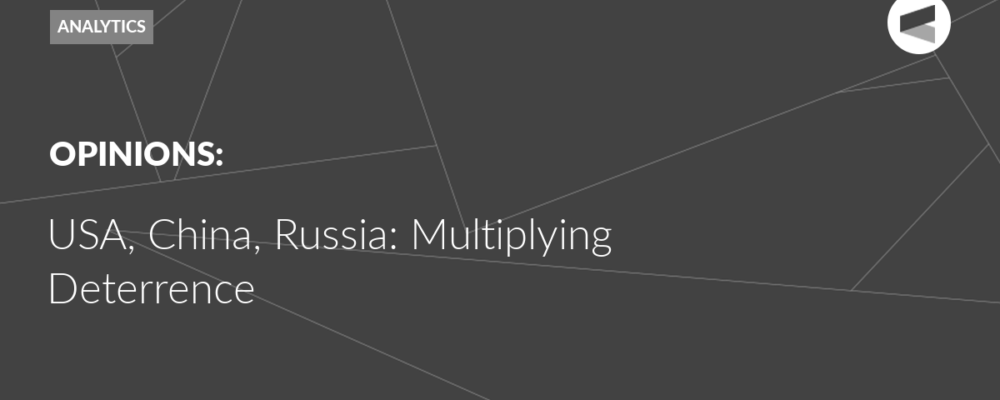Secondary sanctions have now become one of the key political risks facing the foreign partners of Russian businesses. Attention to them has increased significantly since the start of the Special Military Operation and the use of large-scale economic sanctions against Russia by the United States and other Western countries.
Russia has quickly adapted to the restrictive measures. Moscow has built a new system of relations with the states and associations of the “global majority” that have not implemented the Western sanctions. However, businesses from non-aligned countries remain vulnerable. In particular, the US dollar remains a significant means of making international payments. Production chains and supply chains include many of the technologies, components and production elements of Western countries. Pinpoint financial or trade sanctions against individual companies from jurisdictions friendly to Russia can cause irreparable damage to their business. Such a risk often forces companies from non-Western countries to avoid cooperation with Russian partners, fearing the risk of secondary sanctions.
At the same time, the very concept of secondary sanctions remains vague. It has acquired not only and not even so much a legal or political character, but a psychological one. To adequately control the risk of secondary sanctions, it is necessary to understand what they exactly are and how exactly they are applied. This is especially true for the United States, which is the most active in applying secondary sanctions.
The problem begins with the lack of a clear legal definition of the concept of secondary sanctions. It is absent from the regulations of the United States, the EU, the United Kingdom and other initiators of sanctions. The term can be found in the lexicon of American regulators, for example, in Congressional speeches or in answers to frequently asked questions. But mentioning the concept does not mean defining it. Such a definition can be formulated analytically, based on the practice of applying restrictive measures and its differences from other types of restrictions.
Secondary sanctions, as a rule, are restrictive measures against persons from third countries who interact with a country or persons already under sanctions, or participate in circumventing them. Accordingly, primary sanctions are those that are applied to persons in the jurisdiction of the target country, for example, Russia. Secondary sanctions are usually introduced in the form of blocking financial sanctions. They are applied against targeted individuals or legal entities. Blocking sanctions involve freezing the assets of these persons and prohibiting virtually all transactions with them. Secondary sanctions differ from administrative and criminal prosecution measures for violating the sanctions regime. Such measures can only be used by initiating countries in their jurisdiction, even if such jurisdiction is understood in the broadest sense. For example, the US Treasury considers settlements in US dollars as an incursion into US jurisdiction. However, in cases where there is not even an indirect connection with the jurisdiction of the initiating country, secondary sanctions remain the only tool for punishing those who cooperate with Russian partners who are under previously imposed sanctions.
Based on this definition, a number of mechanisms of restrictive measures that can be classified as secondary can be identified in the US regulatory documents on sanctions. Among them, for example, are the provisions of US Presidential Executive Order No. 14114, issued December 22, 2023. It gives the authority to the US Treasury Department to impose blocking and other sanctions against foreign financial institutions that carry out transactions related to the Russian military-industrial complex and certain dual-use goods. These also include certain provisions of Art. 1 of Executive Order 14024 of April 15, 2021. In particular, blocking sanctions can be imposed against any persons, including those from third countries, interacting with certain sectors of the Russian economy – the financial, mining, construction sectors, the electronics industry, etc.
The basis for sanctions may be an attempt to circumvent previously imposed restrictions, communication with previously blocked persons, acting in their interests, etc. Similar provisions are contained in other executive orders (for example, 13661 and 13662) and federal laws (for example, Article 231 of the Countering America’s Adversaries Through Sanctions Act). U.S. Congress (2017) Public Law 115-44 of August 2, 2017).
Since the start of the Special Military Operation, the United States has been actively using secondary sanctions against Russian partners in third countries. In 2022, the US Treasury Department imposed them against 76 foreign legal entities, in 2023 – already 235, and in the first eight months of 2024 – 278. In other words, the pace of introducing secondary sanctions is increasing.
On August 23, 2024, another package of US sanctions was introduced. Blocking sanctions affected 95 companies from third countries. Of these, almost half are from China (45 companies). A noticeable share of companies are from the UAE (15) and Turkey (12). In 72 out of 95 cases, that is, in the overwhelming majority, secondary sanctions were implemented in response to the supply of electronics, industrial goods and equipment to Russia. In seven cases, sanctions were imposed on transport and logistics companies for deliveries to Russia. In six cases – for transactions with precious metals of Russian origin. In four cases – for deliveries which benefitted the Russian military-industrial complex, including unmanned aerial vehicles. In three cases – for providing consulting services and communications to sanctioned Russians. In two cases – for transactions with liquefied gas and deliveries of equipment for gas liquefaction. In one case – for operations in the mining sector.
The August 23 cutoff generally corresponds to the patterns of introducing secondary sanctions from March 2022 to July 2024. During this period, the author recorded 511 cases of secondary sanctions being applied. Of these, 107 cases were related to Chinese companies, 74 to companies from the UAE, and 66 to companies from Turkey. In the two-year period, companies from Cyprus (52) also stood out,. In the wave of sanctions applied on August 23, 2024, there were only two of them. Supplies of electronics and industrial equipment are the key reason for the introduction of secondary sanctions: 252 cases out of 511. Next comes connections with sanctioned persons: 188 cases.
Interestingly, companies from the post-Soviet countries are relatively rarely subject to secondary sanctions. This may be due to both the lack of production facilities of interest to Russia and the specifics of the financial infrastructure – there are no financial hubs similar to the UAE in the post-Soviet space. At the same time, a significant number of companies subject to secondary sanctions are based in unfriendly countries – Germany, Great Britain, Switzerland, Cyprus, etc. This pattern is due to the fact that these companies are used as intermediaries for deliveries to Russia. In general, secondary sanctions are usually imposed against small companies, although not all of them are shell companies. [Timofeev (2024) Op. cit. ]
Finally, another regularity. There is no practice of introducing secondary sanctions against financial institutions. However, the emergence of a legal mechanism for such sanctions, including the aforementioned Executive Order of the US President No. 14114, has significantly increased concerns about the risk of secondary sanctions in the banking community of China and other friendly countries. Such concerns are expressed in delays and the return of payments, as well as an increase in the cost of transactions. The task of creating safe instruments for financial transactions with friendly countries remains on the agenda for Russia and its partners.
The Valdai Discussion Club was established in 2004. It is named after Lake Valdai, which is located close to Veliky Novgorod, where the Club’s first meeting took place.
Please visit the firm link to site






